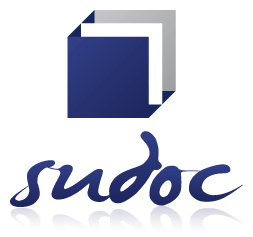The Effect of origami training on increasing creativity and mathematical-spatial Intelligence
DOI:
https://doi.org/10.63053/ijhes.14Keywords:
Amusing, Dramatic, Origami, MoralAbstract
Origami, which is calculated from the figures of Henry, is also developed as a name for it. In the event that there is a problem in this field, in order to create any trace of materials or materials, especially for its use. The morality of human thinking is to support the morality of your blessing on the side of God for the sake of a person who is more in a good way than to use it in the life of a heretic. It is well documented in a descriptive-descriptive manner and in a qualitative manner, based on the sources of any book and valid articles that have been used. The goal of this game is to have an origami effect on creativity and mathematical excitement. The results are as good as origami, and they are not finished in the same way as the code can and nojoanan, but in terms of creativity that over time, you can achieve achievement and even effective technical skills. Origami is a phrase that is calculated as if it was presented in the past. There is a measure in the timing of the memorizer, and there is no need for it, and there is an effective way to keep moral necessities in this age range. This is a good idea and you can use it in the form of a specialization and origami with a familiarity with the name of the names in this resource, the use of which can be decided.
References
Ashna, Ehsan. (1394) Hendermany Chest? Tehran: Salamat Rawani Eda Arteqa Center.
Amini, Muhammad. (1380). Physiotherapy is required for a study program in Iran, an elementary course in Iran, a doctoral program, a study program, and a teaching education teacher.
Asl, Zainab, Naderi, Farah (1390). The effect of dermanic light on the side of the thyroid gland and shadgami kodkan is reviewed by the centers
Consultation and Derman Shahristan Ahvaz. Ahwaz: Yafta Haye no der Rawanshanas (Social Rawanshanas, Shamara 18).
Bratian, Masood; Bejani, Hussein. (1392). Examine the balance of the impact of the Amusesh Khalit program in Afzayesh Khalit Daneshjoyan systematic sciences. Seslam-e-Alamy-Pzhohshi Amuzesh in Enazami Sciences, 1 (2).
Jamshidi, Prisa. (1396). Examine the effect of Amuzesh Kagth and Tabar Roy Kokan Nabina and Naqsh An Bar Khutiyyah Mental. Payanname Karshnasi Arshad Daneshgah Tarbit Dabir Shahid Rajaee. Architectural Danish.
Rezaei, Maryam. (1395). The impact of origami puzzles on the morality of Danish Amozan in the secret of the area 18. Arshad Karshanasi of Tehran: Daneshgah Payam Noor Danshkdah of literature and sciences.
Remember me, remember. (1388). Examine the effect of conducting these programs of elementary school education on a positive note from (Kardesti) on the morals of Danesh Amouzan in the field of elementary school in the 5th district of Tehran. Rahbari and Mediret Amuzhi. 1(7), 55-80.
Saif, Ali Akbar (1397). Rowanshanasi Parorchi Novin, vol.20, Doran Published.
Saif, Ali Akbar (1397). Rowanshanasi Yadgiri and Teaching, Published: Tehran: Sepahian Dashgah, Iran's Revolution.
Sharifpur, siblings. (1390) Bazi origami engraving with its expansion, geometric thinking, Danish Amozan. Payanname Karshnasi Arshad. Tehran: Shahid Rajai's education in the education of Shahid Rajai.
Samadi, Sayed Ali (1393). Bazi Darmani (Theories, Anjam, and Rush Ha, Interventions). Ch.3, Danzhe Publishing.
Sabari Tilki, speaker. (1394). Studying any kind of music is a lesson here in the Debstan section (certainly in the art of origami and pictorial art). Payanname Karshnasi Arshad. Daneshkadah Henar and Architects Daneshgah Mazandaran.
Rita L. Atkinson and Hamkaran (1996). Hilgard's Zamineh Ravanasi, two translators: Brahni, Muhammad Taqi and Hamkaran, ch.31: Bahar Publishing.
Karimabadi, Reza. (1394). Surgirmi Kaghd and Ta, Published by: Canon Fikri Kodak and Nojovan Press.
Ganji, Hamza (1398). General Rowanshanasi Buildings, Ch.28, Rawan Publishing.
http://vista.ir. Mousavizadeh, Mohsen (1399). The history of origami is well known
Mousavizadeh, Mohsen. (1386). Origami Chest article? Mashhad: Notebook of Groh Musharan Shahrdar Jawan.
Persian
Ashna, Ehsan. (1394) What is art therapy? Tehran: Aida Mental Health Promotion Center.
Amini, Mohammad (1380). Designing an optimal model of Iranian elementary school art curriculum PhD thesis in curriculum planning, Tarbiat Modares University.
Asl, Zeinab, Naderi, Farah (1390). The effect of art therapy on self-concept of approval and happiness of children referred to the centers
Counseling and treatment of Ahvaz city. Ahvaz: New Findings in Psychology (Social Psychology, No. 18).
Baratian, Massoud; Bejani,Hossein ،. (1392). Investigating the effect of creativity training program on increasing the creativity of law enforcement students. Journal of Education in Law Enforcement Sciences, 1 (2).
Jamshidi, Parisa. (1396). Investigating the effect of paper and fold education on blind children and its role on mental creativity. Master Thesis of Tarbiat Dabir Shahid Rajaei University. School of Architecture.
Rezaei, Maryam (1395). The effect of origami training on the creativity of male students in District 18. M.Sc. Tehran: Payame Noor University, Faculty of Literature and Research Sciences.
Zakaria, Manijeh. (1388). Investigating the effect of implementing elementary school curricula using art (handicraft) on the creativity of fifth grade elementary school girls in District 5 of Tehran. Educational leadership and management. 1 (7), 55-80.
Saif, Ali Akbar (1397). Modern Educational Psychology, Ch.20, Doran Publishing.
Saif, Ali Akbar (1397). Psychology of Learning and Teaching, Published: Tehran: Iran Revolutionary Army University.
Sharifpour, Shaghayegh. (2011) The role of origami play on the development of students' geometric thinking. Master Thesis. Tehran: Faculty of Basic Sciences, Tarbiat Dabir Shahid Rajaei University.
Samadi, Seyed Ali (1393). Play therapy (theories, research and intervention methods). Ch.3, Danjeh Publishing.
Saberi Tilki, Muhaddatha. (1394). A study on teaching art in elementary school (with emphasis on origami and illustration). Master Thesis. Faculty of Art and Architecture, Mazandaran University.
Rita L. Atkinson et al. (1996). Hilgard Psychology, Translators: Braheni, Mohammad Taghi et al., Ch. 31: Spring
Karimabadi, Reza (1394). Paper and up entertainment, publication: Center for the intellectual development of children and adolescents.
Ganji, Hamzeh (1398). Fundamentals of General Psychology, Ch.28, Psychology Publishing.
.http: // vista.ir Mousavizadeh, Mohsen (1399). History of Origami Posted in
Mousavizadeh, Mohsen (1386). What is an Origami Article? Mashhad: Office of the Young Mayor Advisors Group.
Arici, Sevil, Aslan-Tutak, fatma. (2015). the Effect of Origami- Based Instruction on Spatial Visualization, Geometry Achievement, and Geometric Resoning. International Journal of Science and Mathematics Education, V13n1 pp179-200.
Brown, G., Atkins, M, (1991). Effective teaching in higher education. LLonden: Routledge.
Chen ،yongmin (2006). A study On the impact of origami in teaching math to deaf and hearing impaired students Publication journal of economic and management strategy.
Goodman, J, F. (2011). "Word" versus "Play" and early childhood care. Child and youth care forum ,23 (3) ,177-196.
Ghahvechi, Tugrul .(2002) .A study On the The Effect of Origami on the Advancement of Children's Learning Skills.
Lang, R. J. (2003). Origami design secrets: Mathematical methods for an ancient art. Massachusetts: A.K. Peters. Retrieved from http://site.ebrary.com/ lib/cornell/detail. action?docID = 10159705.
Lang, R. J., & Hull, T. C. (2005). Origami design secrets: Mathematical methods for an ancient art. The Mathematical Intelligencer, 27(2), 92–.95
Phillips،R.F .(1991). A study on the Effect of Origami on Listening and Learning lesson.
Department of Mathematics Education.
Seidel.T., shavelson,R.J (2017). Teaching effectiveness research in the past decade: the role of theory and research in disentangling meta – analysis in results. Review of Educational Resarch, 77,4, 454 – 499,
Shumakov, Katrine; Shumakov, Yuri. (2000). Functional Interhemispheric Asymmetry of the Brain in Dynamics of Bimanual Activity in Children 7-11 Years Old During Training Origami. www. oriland.
com / oriversity / lecture. Php ? category = benefites & ID: 02.
Sorguç, A. G., Hagiwara, I., & Selcuk, S. A. (2009). Origamics in architecture: A medium of inquiry for design in architecture. METU JFA, 2, 235 247. doi:10.4305.
Sze, Susan (2005) .Effects of Origami Construction on Children with Disabilities. 716-286-8326, www.eric. Ed. gov.
Taylor, Holly A; Hutton, Allyson. (2013). Think 3d! Training Spatial Thinking Fundamental to STEM education. Cognition and Instructionv31, n4 p434-45, 0737-0008. http://www. tandf. co. uk/journals.
Tenbrink, Thora; Taylor, holly. A. (2015). Conceptual Transformation and Cognitive Processes in Origami Paper Folding. Journal of Problem Soliving. V8. N. 1pp2-22. http://dx. doi. org/ 10. 1771/1932-6246. 1154docs. Lib. Purdue. du/ jps. www. eric. ed. gov.
Tukman, B, W., Monetti, D, M. (2011), E Educational psy chology, United States: Wadswworth.
Torrance،espial .(2009). A study On the Gender-Based Detection in Creative Thinking.
Downloads
Published
How to Cite
Issue
Section
License
Copyright (c) 2023 Authors

This work is licensed under a Creative Commons Attribution 4.0 International License.
The journal is licensed under a Attribution 4.0 International (CC BY 4.0).
You are free to:
- Share — copy and redistribute the material in any medium or format for any purpose, even commercially.
- Adapt — remix, transform, and build upon the material for any purpose, even commercially.
- The licensor cannot revoke these freedoms as long as you follow the license terms.
Under the following terms:
- Attribution - You must give appropriate credit , provide a link to the license, and indicate if changes were made . You may do so in any reasonable manner, but not in any way that suggests the licensor endorses you or your use.
- No additional restrictions - You may not apply legal terms or technological measures that legally restrict others from doing anything the license permits.












